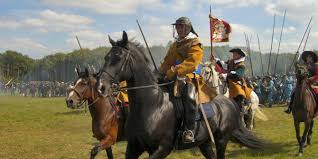The Reformation
Henry VIII (1491-1547) needed a male heir to preserve England’s Tudor monarchy so he was led to break away from control of dynastic power held by the Pope of the Roman Catholic church. It must be remembered that the recent popes had included the Borgias and the practice of purchasing 'indulgences' of the pope to fund the building of St Peter's in Rome. Other European monarchs desired the English throne and could pay more.
Adopting Luther’s philosophy through the Act of Supremacy, Henry took advowson over the bishoprics of England and more importantly access to the wealth of the monastic estates. Monasteries were the technical powerhouse of medieval England, where farming and other technical innovations developed (like gunpowder). Acquiring land from the devout without having to split between any heirs, monasteries had built up huge wealth so were Henry’s great prize.
The dissolution of the monasteries (1536 to 1541) placed land and skills back onto the market for a new strata of renaissance society. The merchants and guildsmen made rich by trade created a landed gentry separate from the older aristocracy. However, the loss of the monasteries' social support to their communities (principally their hospital care of the sick) was a severe loss to the poor.
These were dangerous times: the swing between catholic and protestant power throughout the period of Mary’s reign (1551-58), which saw folk being burnt as heretics for professing a faith previously allowed.
The Elizabeth Age
The accession of Elizabeth I in 1558 swung in protestant favour and in 1562 she ordered the issue of communion chalice and patten to each parish church. St Nicholas was given one (now in Chichester Cathedral Treasury) signalling St Nicholas was in church hands rather than a monastery house by 1562. It is a simple, functional design in silver that harmonised communion across the land.
Perhaps the subtlety of the gift belies the message of a Queen taking ascendency in a way that that touches the whole community in the most Christian of practices.
Elizabeth also instituted the church’s role in keeping registers of births and deaths, so it is from this time that church registers can be found. St Nicholas’ registers go back to 1530, though are only complete since 1571 when Elizabeth I enacted the necessary laws. We have two extracts found in Chichester Registry.
Elizabeth also distributed a book of sermons for use in churches. At more than 350pages, it added to Cranmer’s Book of Common Prayer to harmonise church of England practice. The subject of these sermons suggest the English haven’t changed much in their habits.



